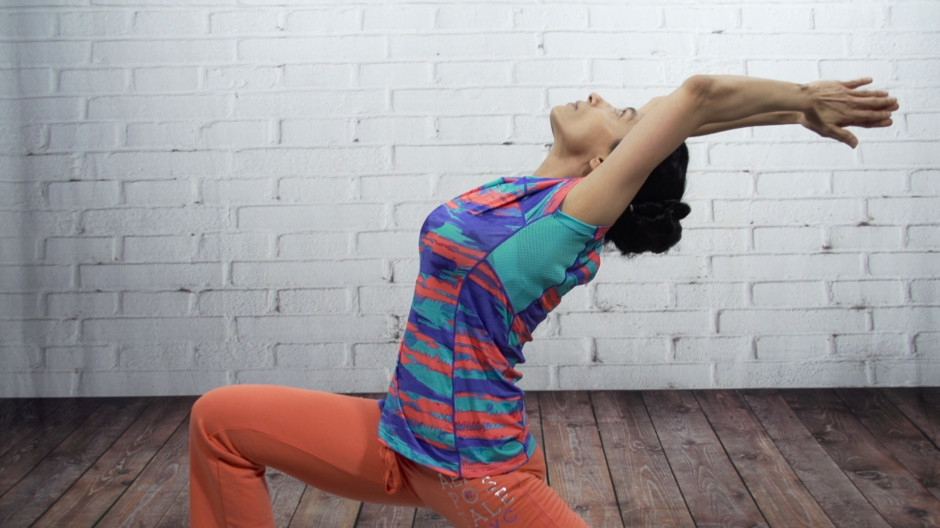Chandra Namaskar or Moon Greeting is a soothing yet empowering variation and counterbalance to the classical Surya Namaskar or Sun Greeting. They allow us to honour the yin or feminine side of our energy, in contrast to the Sun Salutations, which are more yang, or masculine, in nature.
However, Chandra Namaskar is not just for women! Men can reconnect, realign and cool down fiery impulses through it, and can shift energy without increasing heat in the body. It tends to be less stimulating than Sun Greeting, thereby balancing hot emotions, relaxing and calming the mind and body, and restoring balance.
The moon is of particular importance in Hatha Yoga. The word Hatha is broken down as “Ha” meaning “sun” and “Tha” meaning “moon.”
Traditional Surya Namaskar enhances our inner fire and strengthens us as we prepare for life’s obstacles, while the Chandra Namaskar cools us as we prepare for our journey of descent; going inward, uncovering our wisdom, creativity, balance and inherent intelligence, hence opening the path for enlightenment.
Surya Namaskar are designed to allow us to connect to the sun’s powerful energy and are often practiced at dawn. The Chandra Namaskar are especially effective when practiced during the full moon, as this is the most powerful lunar phase.
The amazing Moon Greeting is not just for full moon practice and are for any time of day, but are especially beneficial when performed in the evening as the series of poses is designed to calm the mind and relax the body.
If possible, practicing Moon Greeting outdoors during a full moon is a very powerful practice, as lunar energy can be absorbed for healing, empowerment and intuitive energy. The moon is cooling and luminous and this practice is meant to celebrate and promote all the magical gifts that the moon has to give.
Chandra Namaskar helps you in channelizing the lunar energy; which has cool, relaxing, and creative qualities. It also stretches the spine, hamstrings, and backs of legs; strengthens leg, arm, back, and stomach muscles. Like all other yoga practices, it is important that you learn it under proper supervision.
Chandra Namaskar sequence of postures:
Each round consists of two sets. These 16 yoga poses complete one set of Chandra Namaskar. To complete the second half, you need to repeat the same sequence of postures, only moving the left leg instead of the right (in steps 4 and 11 given below).
1) Pranamasana (prayer pose)
Stand straight with feet together. Bring the palms together in the prayer position.
2) Hastauttan-asana (raised arms pose)
Breathing in, bring the arms forward and up, stretching as high as possible. Gently arch the back by pushing the arms back and the pelvis out in front. The elbows and knees are straight, and the head is in between the arms, chin pointing to the ceiling.
3) Padahastasana (hand to foot pose)
Breathing out, bend forward. Place the hands on the floor. Bend the knees. With the hands on the floor, straighten the knees.
4)Ashwa Sanchalanasana (equestrian pose)
Push the right leg as far back as possible; right knee on the floor, sole facing the ceiling. Look up.
5) Half moon pose
Inhale and raise ur arms up. Bend backward from ur back to get maximum stretch.
6) Konasana (angle pose)
Make your left leg straight . Exhale and take ur forehead down to the left knee.
7) Dandasana (stick pose)
Holding the breath, push the left leg back. Bring the body into a straight line while keeping the knees straight.
8)Ashtanga Namaskara (salute with eight parts or points)
Move forward, keeping the chin close to the ground. Your chin, chest, palms of your hand (on either side of the chest), knees, and toes touch the floor. Raise your bottom.
9) Bhujangasana (cobra pose)
Breathing in, go into the Cobra position. Hands under the shoulders, elbows close to the body, heels together. Press the pelvis to the ground and lift up. Focus on the bending in the upper back.
10) Parvatasana (mountain pose)
Breathing out, come up on hands and feet in an inverted ‘V’ position. Push back with arms and hips; try to place heel on the ground.
11) Ashwa Sanchalan Asana (equestrian pose)
Breathing in, bring the right foot forward. Looking up, keep left knee on the ground and left foot facing the ceiling.
12) Half moon pose
Inhale and raise your arms up. Bend backwards from your back to get the maximum stretch
13) konasana (angle pose )
Make your right leg straight, exhale and take ur forehead to the right knee
14) Padahastasana (hand to foot pose)
Breathing out, bring the left foot alongside the right foot.
15) Hastauttanasana (raised arms pose)
Breathing in, come up to standing position, stretching the arms straight up and back, push the pelvis out to the front.
16) Tadasana
As you exhale, first straighten the body, then bring the hands down.
Editor’s note: The blogger is a homeopath, lifelong vegetarian and high level yoga practitioner. If you have any questions for her, please email them to readers@gulfnews.com or post on the Gulf News Facebook page.











